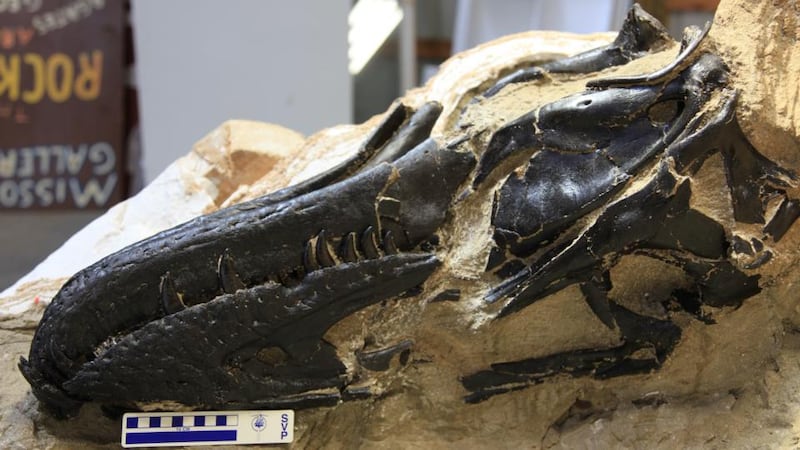An auctioneer's gavel could decide the fate of one of the most controversial of the dinosaurs, just as scientists have resolved its identity crisis.
The fossil, due to be auctioned at Bonhams (New York) on November 19th, features a Triceratops preserved alongside the skeleton of a new specimen of Nanotyrannus.
It seems the two, known as “The Montana Duelling Dinosaurs”, came to blows some 67 million years ago with neither living to tell the tale but now preserved in immortal combat. Palaeontologists have been divided for more than 25 years over whether Nanotyrannus was a distinct species, related to Tyrannosaurus rex, or simply a juvenile T. rex.

Private hands
The fossil is held in private hands, hence the auction, but the new species cannot be brought into the scientific literature unless it is brought into public ownership and made available for scientific research.
Dr Philip Manning from the University of Manchester, was, however, granted access to the unique specimen in advance of the auction and he revealed his preliminary findings on the fossil yesterday at the British Science Festival in Newcastle.
“This is possibly the most astoundingly amazing fossil in the world,” said Dr Manning. “Even if it were a T. rex, it would be a big find because the fossil is 99.9 per cent complete. The most valuable T. rex ever found was only 85per cent complete.”
Although it “could curl 800 pounds”, T. rex had distinctive, “tiny arms”, explained Dr Manning. The forearm of the Montana specimen was very large even though it was a smaller dinosaur than T. rex.
“Unless the arms shrunk with age, the Nanotyrannus is real and was a distinct species,” he added.
A pile of key skeletal characteristics has been identified that nail this dinosaur’s identity. “This Cretaceous predator has a graceful, almost swan-like neck, but huge arms,” said Dr Manning.
Preserved skin
The fossil revealed the Nanotyrannus locked in combat with the Triceratops, a Ceratopsian dinosaur. Both show near-perfect preservation, with bones beautifully preserved and possibly a hint of rare, preserved skin. It also provides evidence of the pair's struggle as the Nanotyrannus teeth are embedded between vertebrae in the neck of the Triceratops.
Dr Manning explained that the two were about the same size. The Triceratops was “bigger and heavier, and 16-18 feet long while the Nanotyrannus was lighter but 20-24 feet long”. The finding indicates that T. rex faced a mid-sized competitor predator or that they preyed on Nanotyrannus.
“It seems logical that this animal filled an intermediate ecological niche between the vast T. rex and contemporary dromeosaur predators,” said Dr Manning.
It now however comes down to the auction. “The Nanotyrannus is real,” said Dr Manning, “but it is in danger of getting lost to science.”
The sale is expected to reach six to nine million dollars. “Survival in scientific records now depends on an auctioneer’s gavel.”
Dr Gavin Collins is based at NUI Galway and is on placement at The Irish Times as a British Science Association Media Fellow, in collaboration with Science Foundation Ireland










